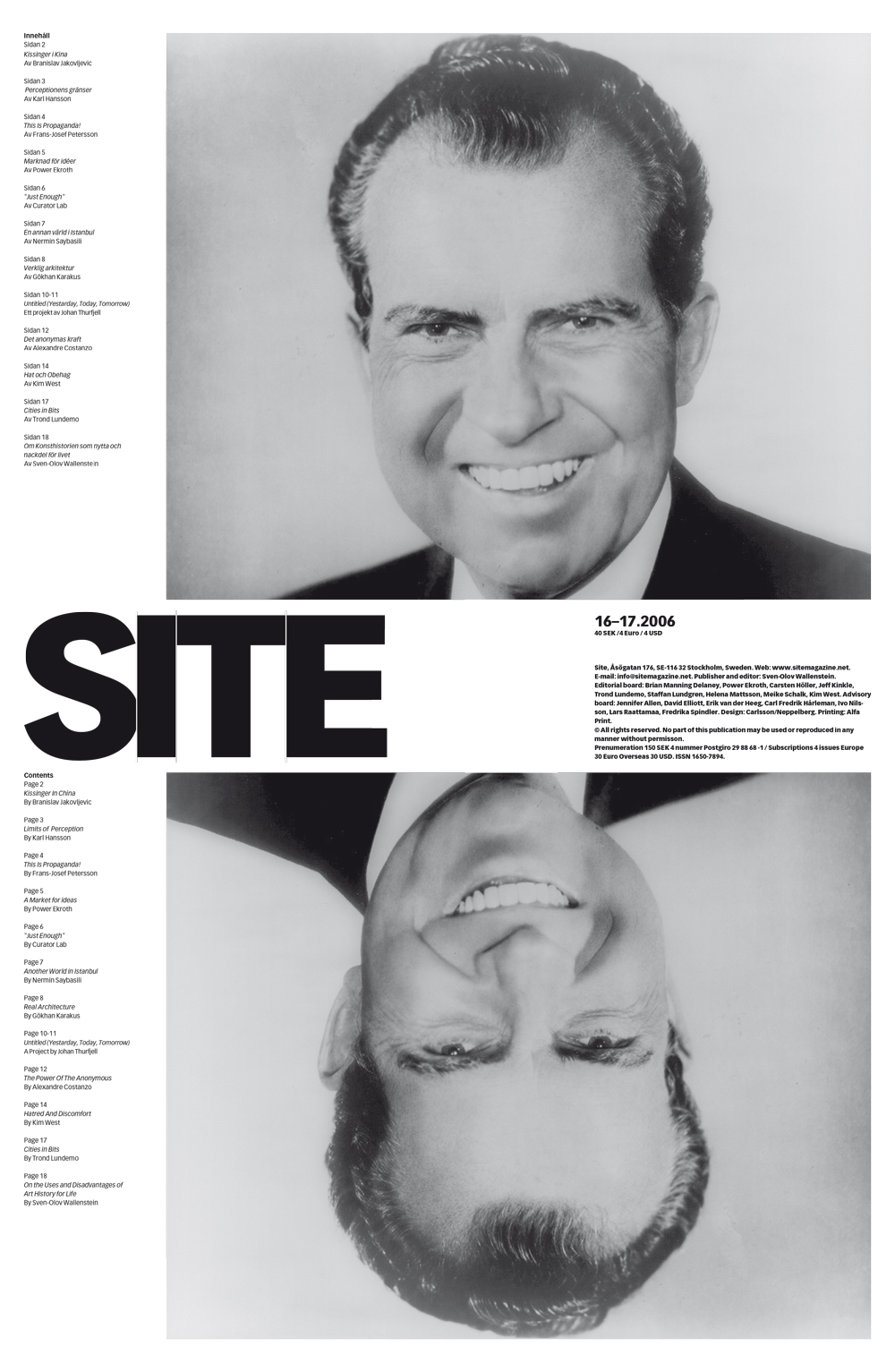16-17.2006
 Download
Download
In Comments on the Society of Spectacle, published in 1988, Guy Debord wrote about the fusion of the concentrated and diffuse spectacles into a new form of integrated spectacle, which combined the features of the former, once characteristic for the countries of “state capitalism” and the latter, which developed in Western democracies.The contours of the new, more complex and less discernable form of spectacle were emerging from the ruins of the Cold War. However, the interpenetration and gradual integration of the two forms of spectacle began earlier than Glasnost and Perestroika, and it did not happen between the two leading super powers. The bipolarity was challenged by the emergence of the third power, an enigmatic and distant locus of concentrated spectacle.
For a moment in the late 1980s, it appeared as if China was resolved to oppose with all of its might the process of integration of the two kinds of spectacle. Now it is clear that the perpetrators of the Tienanmen slaughter knew better than the victims. China was already entering the new phase of the spectacular society, and by now the trans- Pacific integration of the spectacle is almost complete. Its features are discernable on both sides of the ocean: occultation of power, invisibility of ideology, full integration of military and industry, and spectacularization of all social and economic relationships. This form of spectacle, as predicted by Debord, not only describes reality, but structures and changes it to such a degree as to become indiscernible from it. The symptoms are still observable mostly in the mass media, that most apparent and vulgar segment of the spectacle.
Excerpt from "Kissinger In China" by Branislav Jakovljevic.
Contents
Kissinger In China
By Branislav Jakovljevic
Limits of Perception
By Karl Hansson
This Is Propaganda!
By Frans-Josef Petersson
A Market for ideas
By Power Ekroth
"Just Enough"
By Curator Lab
Another World in Istanbul
By Nermin Saybasili
Real Architecture
By Gökhan Karakus
Untitled (Yestarday, Today, Tomorrow)
A Project by Johan Thurfjell
The Power Of The Anonymous
By Alexandre Costanzo
Hatred And Discomfort
By Kim West
Cities in Bits
By Trond Lundemo
On the Uses and Disadvantages of Art History for Life
By Sven-Olov Wallenstein
Issues
33.2013 Senses
31-32.2012 Remake Remodel
29-30.2010 Vanishing Points
28.2009 The Contagious Documentary
26-27.2009 Venetian Views
25.2009 Derrida’s Last Paths
24.2008 Residuals
22-23.2008 Spaces of Art
21.2007 Authentic Histories
20.2007 Reinventing Site
18-19.2007
16-17.2006
15.2005
13-14.2005
12.2004
11.2004
9-10.2004
7-8.2004
6.2003
5.2003
3-4.2002
2.2002
1.2001
Publisher and Editor in Chief
Sven-Olov Wallenstein
Editors
Tim Anstey, Brian Manning Delaney, Power Ekroth, Jeff Kinkle, Trond Lundemo, Staffan Lundgren, Karl Lydén, Helena Mattsson, Meike Schalk, Susan Schuppli, Kim West.
Contact
info@sitemagazine.net
Submissions
Text proposals to be sent to info@sitemagazine.net
© 2025
Graphic Design
Konst & teknik

